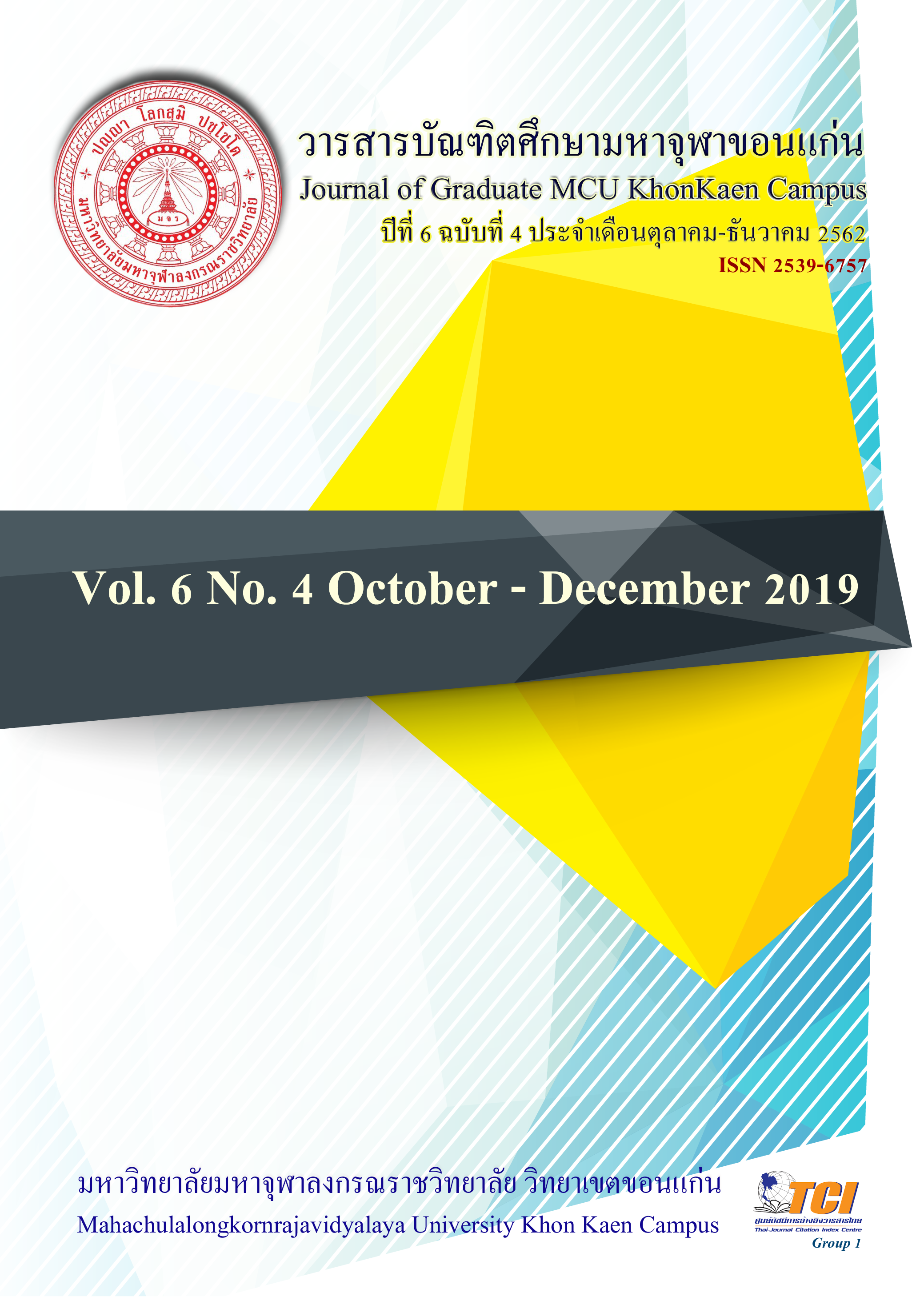The Buddhist Management of Community Forests according to Changphuak Sub-district Suwannabhumi, District, Roi-Et Province
Main Article Content
Abstract
Abstract
The aims of this research were: 1) to study the Buddhist forest management; 2) to study the problematic conditions and community forest management in Chang Phueak sub-district, Suwannaphum district, Roiet province; 3) to study the Buddhist forest community management in Chang Phueak sub-district. This study was conducted by using the qualitative research methodology through the documentary study and fieldwork. 14 key informants were used in the in-depth interviews and 25 participants joined the in the group discussion. The research tool used in collecting the data was a structured interview form and the obtained data were interpreted by the descriptive analysis.
The research results were as follows:
In terms of the Buddhist community forest management, it was found that it is the application of the Buddhist doctrine to take care of the community forest in order to solve the problems of deforestation and development of life, society and environment related to humans.
The study of the problems and community forest management in Chang Phueak sub-district found that the problems of Dong-Tamle Don Yai community forest was caused by forest encroachment to log Siamese rosewood, and management of Dong-Tamle - Don Yai community forest was caused by people in the community that have knowledge and understanding of the problems of illegal logging of Siamese rosewood. Together, they create good conscience and awareness of the value of community forests, and gather they form a volunteer group to protect the Dong- Tamle Don Yai community forest by helping to prevent, suppress, control, rehabilitate and maintain the community forest. The problematic conditions of Ban Non Sawang community forest were caused by the forest encroachment and deforestation. The forest deforestation prevention is in the way of the community that the community and the forest must coexist but there still is a lack of knowledge, experience and a participatory process from community organizations and other relevant agencies that help develop a community forest to be sustainable. Ban Non Sawang community forest management must rely on the management of Dong-Tamle Don Yai community forest.
Buddhist community forest management in Chang Phueak sub-district is found to be a guideline for working between people in the area together with relevant government agencies. It creates the process of participation of people in the community and people in the area in cooperation. Both community forests have been restored and developed to create a community forestry management process with stability and a clear system which enables people to manage natural resources in a clear, sustainable, holistic way of Buddhism. The Buddhist management of community forests in Chang Phueak sub-district is the integration of Buddhist doctrines in forest management to enable people and forests to live together in a natural way and to build relationships between nature and people in the community supportive to each other by not hurting each other, having kindness to nature, recognizing the value of forests in the area and helping to maintain it.
Article Details
References
BuddhadasaPhikkku.(1975).Camp Dhamma.Bangkok: Dharmathan Foundation.
Chankaew,S.(2010).Environmental Science.Bangkok: KasetsartUniversity.
Duannapa Puthong 2018 . The Community Forest Management for Sustainability Using Process of Public Participation and Loval Tradition in Northern Thainland Region.Doctor of Philosophy Program Department of Public Administration. Graduate School: Rangsit University.
Phramaha Mit Thitapanyo.(2013).An Analytical Study Guidelines for Prevention and Solve the Problem of Pollution on Buddhist. Dhammathas Journal. Vol 19 No 1 March-June (2014). KhonKaen: Mahachulalongkornrajavidya.
Phra Dhammapidok (P.A. Payutto) (1994: 16).Thai People and Forest. Bangkok: Buddhadhamma Foundation.
Royal forest department Community forest The community forest, Bureau of Forest Planting Promotion. (1998). Bangkok : Royal forest department.
Supimol Sornnsakda.Patterns and Processes of Buddhist Community-Forest Conservation in Ubonratchathani. (2012). Report Research: Mahachlalongkornrajavidyalaya University, Ubonratchathani Campus.
Saneh Charmarick and Yos santasombat. (1993). Community forestry in Thailand, development guidelines.No 2. Bangkok: Local Pattana Community Development Institute.

